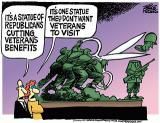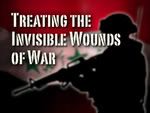Aug 17, 2015 - "It was just another day in Mosul," the soldier began, his voice shaking. Sgt. 1st Class Marshall Powell took a deep breath. He couldn't look at the other three servicemen in the group therapy session.
He'd rarely spoken about his secret, the story of the little girl who wound up in his hospital during the war in Iraq, where he served as an Army nurse. Her chest had been blown apart, and her brown eyes implored him for help. Whenever he'd thought of her since, "I killed the girl," echoed in his head.
Powell kept his eyes glued to the pages he'd written.
He recalled the chaos after a bombing that August day in 2007, the vehicles roaring up with Iraqi civilians covered in blood. Around midnight, Powell took charge of the area housing those with little chance of survival. There, amid the mangled bodies, he saw her.
She was tiny, maybe 6 years old, lying on the floor. Her angelic face reminded him of his niece back home in Oklahoma.
Back in the therapy room, saying it all out loud, Powell's eyes began to fill just at the memory of her. "I couldn't let her lay there and suffer," he said.
A doctor had filled a syringe with painkillers. Powell pushed dose after dose into her IV.
"She smiled at me," he told the others in the room, "and I smiled back. Then she took her last gasp of air."
snip Still, debate persists over whether moral injury is a part of PTSD or its own separate condition. There is no formal medical diagnosis for it.
Psychiatrists who treat moral injury believe it has contributed to the suicide rate among veterans, who account for 1 out of every 5 suicides in the United States. And they see danger in ignoring it because its treatment is distinct.
PTSD sufferers can find relief with medication and counseling that encourages reliving the triggering incident to work through fear. But if the person considers what happened to be morally wrong, reliving it may only reaffirm that belief. read more>>>























No comments:
Post a Comment